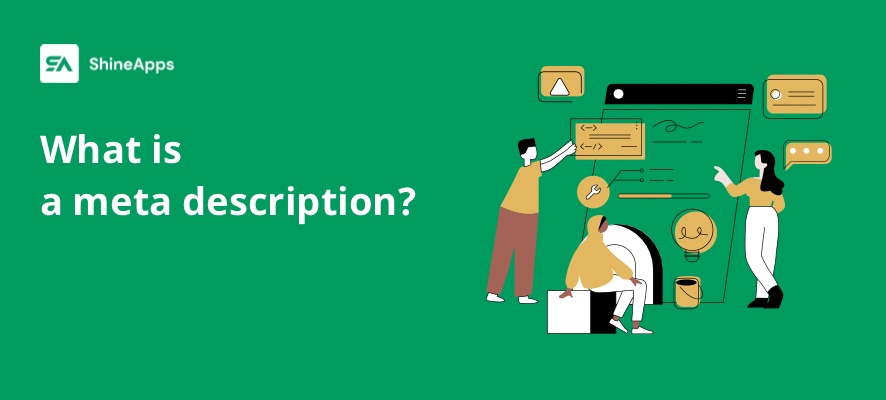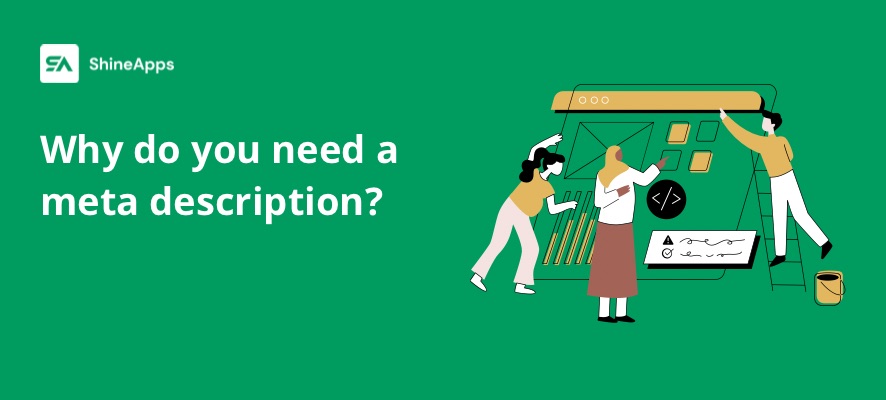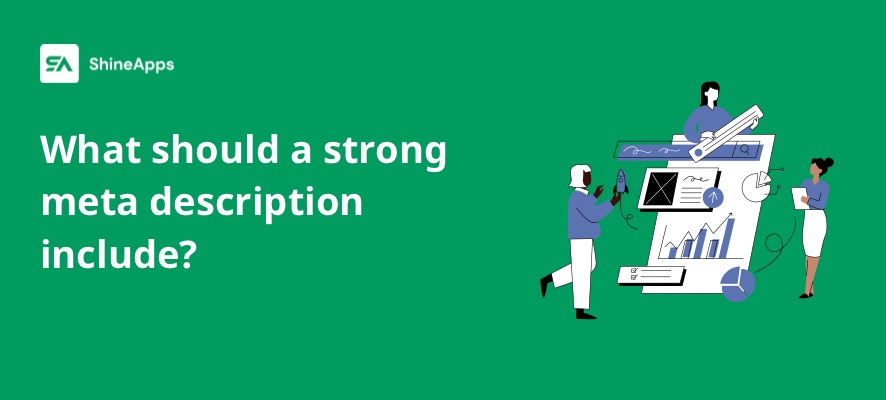Meta description breaks down the information on a page and displays it to users in the search results. It’s one of the first things people will likely see when looking for something; therefore, SEO optimization is important. You have the opportunity to encourage users to click on your result! This post will discuss what makes a strong meta description and help you write the right meta description.
What is a meta description?

You can add the meta description HTML tag to a post or page on your website. You have about 155 characters to explain the subject of your page. If you’re lucky, Google will display it in the search results below the title of your page. You can persuade users of search engines that your page has what they are seeking.
This is where it can be seen in Google’s search results:

Why do you need a meta description?

The goal of a meta description is straightforward: it should persuade someone using a Google search keyword to click your link. In other words, the purpose of meta descriptions is to encourage search engine click-throughs.
Because they lack it in their ranking algorithm, search engines claim that the meta description has no direct SEO benefit. There is, however, an unintended advantage:
Google uses the click-through rate (CTR) to assess whether you are getting a good result. Google will consider you a good result and, depending on your position, will boost you up the ranks if more people click on your result. Because of this, optimizing your meta description and titles is important.
Sadly, there is no guarantee that Google will see the description you have written. But since there’s a chance it will, it’s always good to include it in the post or page.
What should a strong meta description include?

The following is a list of the factors that make a strong meta-description:
- Keep it up to 155 characters
- Use an active voice and make it actionable
- Include a call to action
- Use your focus keyphrase
- Show specifications when needed
- Make sure it matches the content of the page
- Make it unique
Let’s go over them in detail!
Keep it up to 155 characters
There is no ideal for the right length; it all depends on the point you want to make. Keep it brief and quick, but give the message enough space to be conveyed. However, if you look through Google’s search results, you’ll typically find snippets between 120 and 156 characters long.
The maximum length of a meta description, according to Google, is 155 characters; anything greater would be shortened. However, there is a limit to what we can see in the SERPs.
Unfortunately, you have no complete control over what Google shows as search results. Sometimes it displays the meta description, and other times it only takes parts from your writing. In either case, it’s best to keep it brief. In this way, if Google chooses to display the description you have typed, it won’t be shortened.
Make it actionable by using active voice
You must consider your user and their (potential) reason to visit your page if you view the meta description as an invitation to your page. Make sure your description isn’t tedious, challenging, or overly mysterious. People should be aware of what to expect from your page.
Add a call to action
“Hello, we just released a brand-new product, and you want it. Discover more!” This is similar to what we said earlier regarding the active voice, but we wanted to reiterate it. The sales text is the meta description. The linked page is the “product” you are trying to sell in this specific case. We also make use of invitations with phrases like Learn more, Get it now, and Try it for free.
Use your main or focus keyword
Google will be more likely to use it and promote it in the search results if the search keyword matches a section of the meta description. This will only increase the attraction of the link to your website. Google will occasionally highlight synonyms. Your results stand out much more when they are highlighted in that way.
You can also use the Google Keyword Planners tool to find more suitable keywords for your business.
Show details whenever possible
It can be a good idea to concentrate on the technical details if a product in your Shopify or WooCommerce business is targeted at a tech-savvy customer. You may, for example, provide the price, SKU, and manufacturer.
The visitor won’t need persuading if they are looking for that product precisely. Can the watch help with our fitness? That’s all we need to know – sign us up. Be aware that you should work on obtaining rich snippets if you want to optimize your result in this way.
Make sure it matches the page's content
This is an important one. If you use the meta descriptions to trick users into clicking on your result, Google will find out. If you do it, they might even blame you for it.
Additionally, though, false descriptions will raise your bounce rate. It will also undermine public confidence in your business. That alone makes it a horrible idea. Because of this, you need the meta description to be related to the page’s content.
Make it different
The user experience on Google will suffer if your meta description is the same as those on other pages. All of your pages will seem the same, even though their titles could be different since they all share the same descriptions.
You should better leave the meta descriptions blank than duplicate them. Google will choose a snippet from the page that contains the query’s keyword. The best practice is to create an exciting meta description for each page you wish to rank.
In Conclusion
Practice time has come. To boost website traffic, give a positive user experience, and raise conversion rates, you need to write attractive meta descriptions, no matter your experience as a rookie or seasoned eCommerce webmaster. You may optimize your pages for the web by checking the boxes above, and you’ll soon experience the benefits of increased traffic and sales.



